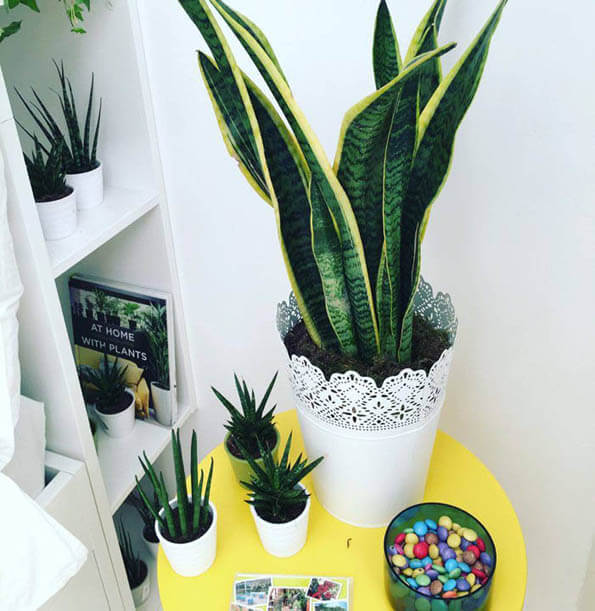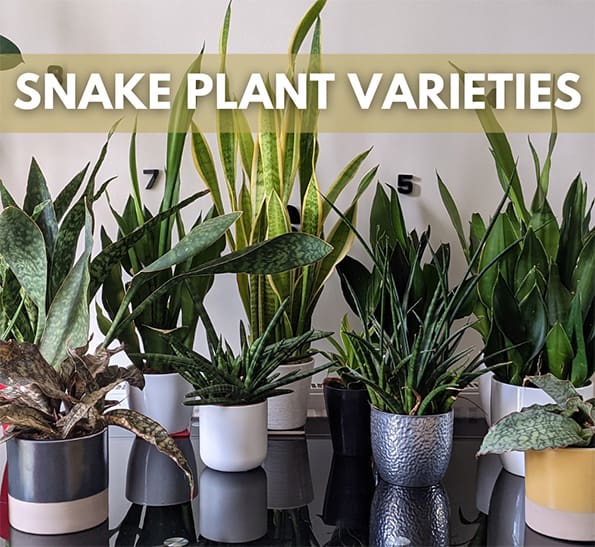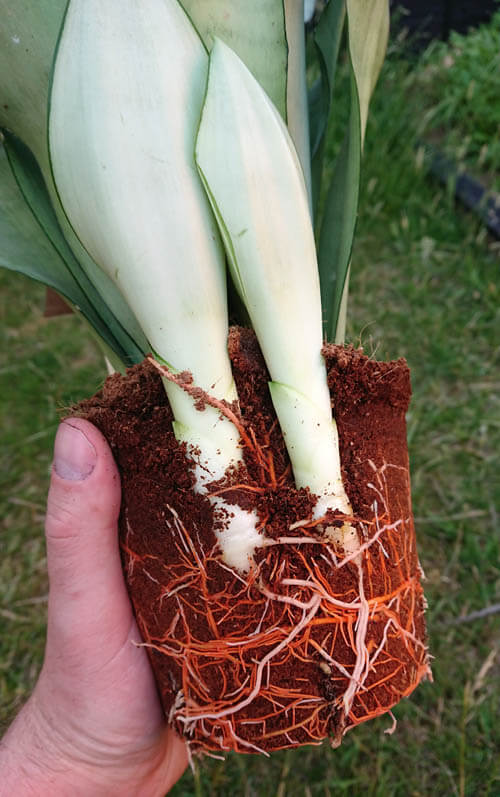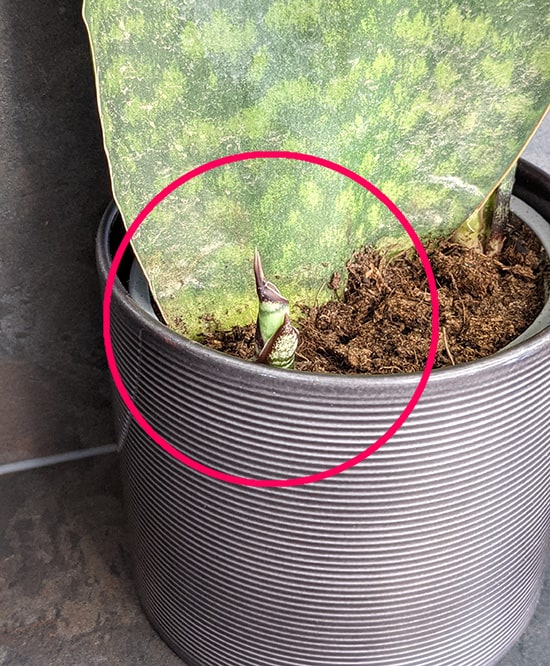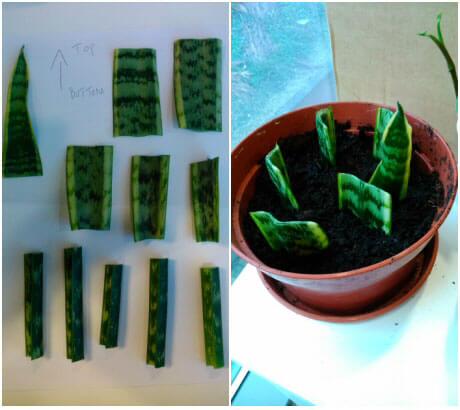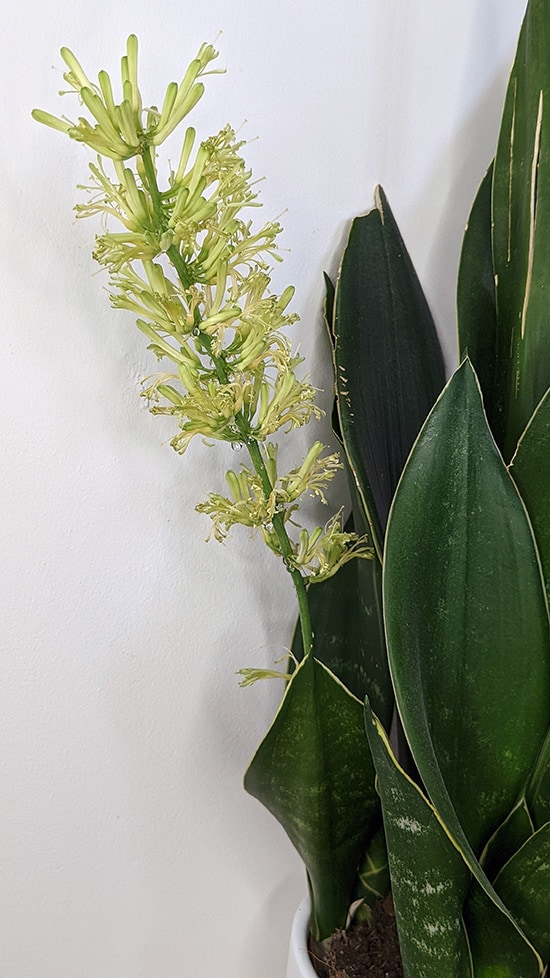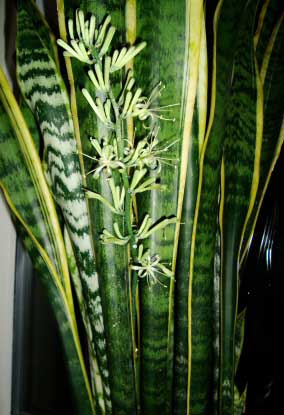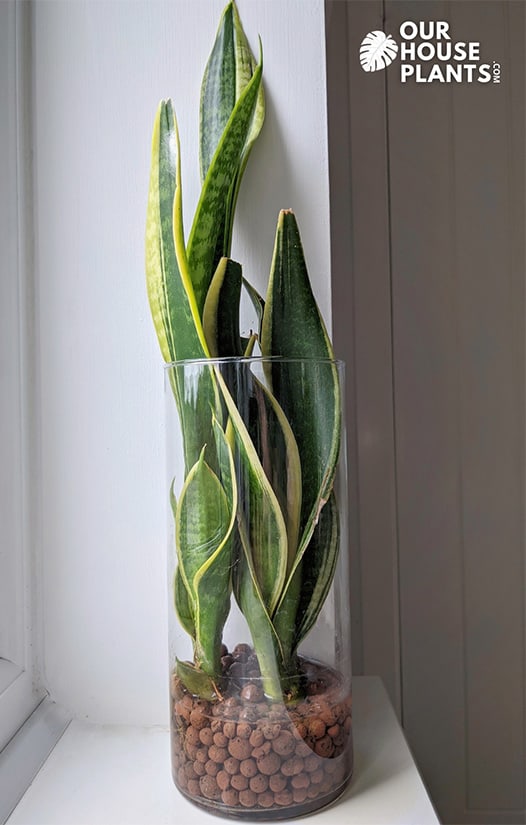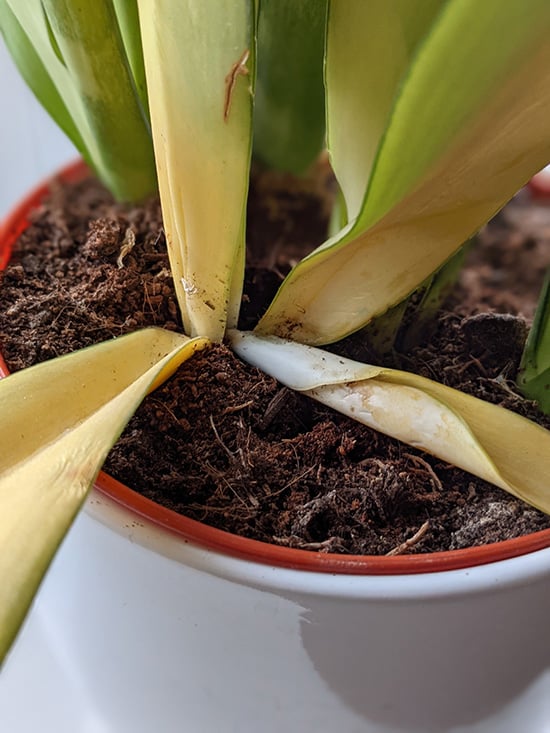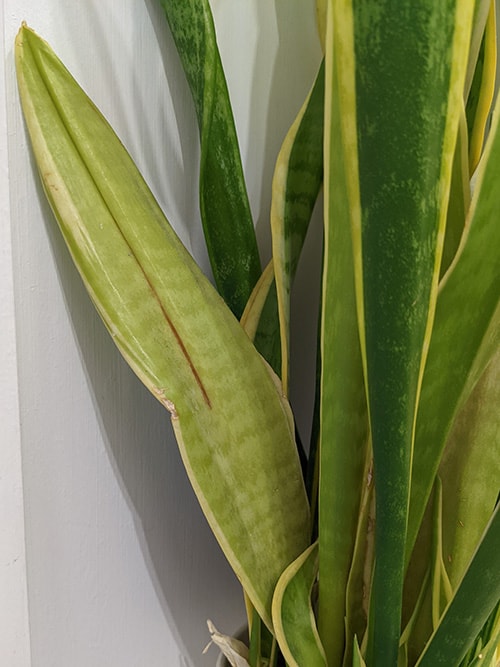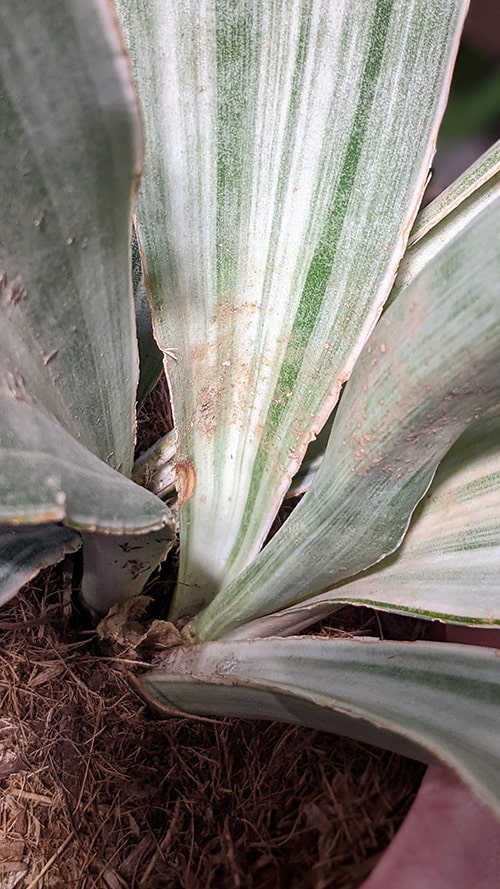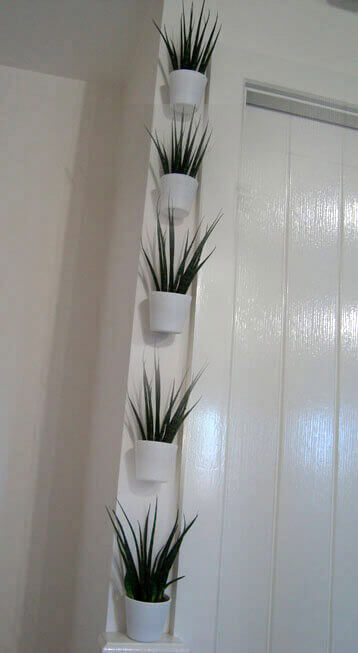A Sansevieria, more commonly known as the Snake Plant, is both striking and a remarkable easy care houseplant.
Snake Plants are an ever popular house guest, and much of this is due to their near indestructible qualities. It's also desired for its upright and erect leaf habit, which fits into almost any home, from traditional decor to more modern styles.
A small collection of Snake Plants or using it's other common name, the Mother-in-Law's Tongue. The different varieties you can buy today are huge.
The Snake Plant's bold and clutter-free lines make it very popular and one of the plants of choice for architecture and interior design, especially because of its reputation as an improver of indoor air quality.
It's a trendy indoor plant and much of this has to do with its near indestructible qualities.
It belongs to the Asparagaceae family and is native to the tropics of Madagascar, Southern Asia, and West and Southern Africa. It's a succulent plant and many of the varieties you can buy have sword-like leaves, which is why it's often known as the "African Spear Plant", "Mother-in-Law Tongue" and of course "Snake Plant".
Many people believe the Latin name "Sansevieria" comes from "Sand Snake". With its cacti like properties and appearance of a rising snake, it's not hard to see why. But that's actually wrong.
The plant genus was named in 1794 by the Swedish naturalist Carl Thunberg after Raimondo di Sangro (1710-1771), otherwise known as Prince of Sansevero.
As a result of modern day improvements with DNA studies, in 2017, the plant was officially removed from the Sansevieria genus and moved into the Dracaena genus. This was the result of botanists discovering a high number of shared genes between the plants.
Sansevieria Vs Dracaena
As of 2023, we've decided to continue the use of "Sansevieria" on the site. Simply because the name is still heavily used in informal settings and therefore it's much more familiar to our visitors.
For many fans of this plant, the change in genus was a shock - even to me. Visually the similarities to the better known plants within the Dracaena genus (think the Dragon Tree or the Corn Plant) are remote at best.
So there has been a fairly slow uptake in using the new name in more casual and informal settings. Ultimately however the truly recognized genus within science and the correct botanical name is now Dracaena, so expect this name to become more used in years to come.
Today, you can get your hands on a huge number of different Sansevieria varieties. Some are easy to find, others less so.
Broadly speaking you can divide them into three groups. Those with flat shaped leaves than can be bent easily. Those with flat leaves with leaves that are too stiff to bend. Finally, those with rounded shaped leaves.
The care requirements are largely the same, but some varieties have some unusual quirks. I'll likely write separate care guide articles for some of the more specific named varieties and will link to them here.
Sansevieria kirkii 'Silver Blue' and Sansevieria Kirkii 'Coppertone' Care Guide.
In the meantime if you want to see what's out there to buy, then check out my Snake Plant varieties guide. Otherwise keep scrolling for the care requirements and problem guide.
Do you know the differences between your Sansevieria cylindrica and Sansevieria zeylanica? If not, then this guide which covers the more popular species of Sansevieria that you can buy, could be for you.

Hi, I'm Tom!
If you're like me and enjoy the challenge of growing houseplants and getting them to thrive, then Ourhouseplants can help. This website shares my knowledge and years of growing plants and provides (hopefully) helpful advice on properly caring for your indoor plant friends.
All Snake Plants would prefer bright light with at least some direct sun for several hours a day. However, they'll still produce growth in a position with less light (although a bit slower) as long as it's not deep shade or very low light.
Tip - Plants grown in a dark location should not suddenly be moved into intense sunlight as this could scorch the green leaves. Get it used to the brighter area by putting it somewhere with indirect sunlight for a few weeks before trying it out in full sun.
One of the major advantages of this plant is that even low light can be tolerated for several years (yes, years!). Providing you're happy to accept you may not see any new growth at all and that you take care not to overwater your plant.
Overwatering is much easier to do than you might think, so be extra careful and only water once or twice a month at the very most if light levels are poor.
Finally, most plants grown in low light will lose some of the colorful markings and will gradually revert to darker greens. You need to provide good light to maintain these markings.
Water moderately from Spring to Autumn/Fall, significantly less in the Winter months because it won't need as much water then.
By cutting back on the water you will reduce the possibility of your Snake Plant rotting from being overwatered, which is the most common problem people experience with these plants.
Further reading -
How Often should You Water Snake Plants?
They're very drought tolerant and can put up with months of no water, but will quickly suffer if allowed to sit in wet and permanently damp conditions. I can't stress this enough. Wait until the potting mix has dried out almost fully, or entirely before giving it more water.
The water needs will vary between plants, but as a basic rule, I typically water most of my plants once every two weeks. This increases to once a week in hot temperatures with full sun. Less in Winter when it's cooler.
They come from a tropical climate and are tropical plants, but the humidity level in your home is generally unimportant for all varieties of Sansevieria. They'll put up with anything.
In general Snake Plants are not overly heavy feeders. So when it comes to feeding, a standard cactus or all-purpose fertilizer during the Summer months is perfect.
Be careful not to overdo it though and make sure you read the instructions on the packet. I've used both the Miracle Grow and Baby Bio brands on as well as other lesser known brands over the years and they all seem to work well and with no obvious negative side effects.
Even though these are crazy tough and hardy plants, they'll struggle with very cold Winter temperatures.
If the soil is dry it will survive without issue down to 5°C (41°F). But wet soils at this temperature drastically increase the chances of leaves rotting away so be careful.
To get a good level of new growth and to ensure your plant is happy, it will need temperatures between 18°C (65°F) - 27°C (80°F).
Don't be in a hurry to keep upsizing your plant. They still do surprisingly well with limited space around their roots for years. This also reduces the chances of overwatering mistakes.
Additionally, the plants typically look best in a smaller, narrow pot due to their upright growth habit. Finally if you decide you want flowers on your Snake Plant it will need to be fairly root bound to produce them.
However, like all houseplants there will come a point when the soil medium has completely broken down or the plant has no room to produce new growth. At this point, it's time to break your plant out of it's pot (sometimes literally!) and move it into something bigger.
If you notice you're not getting new leaves or any growth after a growing season, it could be time to repot your Snake Plant.
Continuing with the easy going theme, Snake Plants will grow in a wide variety of soils without issue as long as it's not soggy soil.
The key here is to avoid the roots being surrounded by too much water which can trigger rotting.
With this in mind, I recommend going for an open and free draining mix. Regular garden compost you can buy from shops is often okay; peat free mixes are usually a good choice, too, because it has lots of materials to help keep it "open".
If you feel the soil is still quite dense and holds too much water you can add grit or Perlite to open it up. If you're not a fan of creating your own potting mixes, then just buy a soil mix designed for cacti or succulents.
Tip - You can repot all Sansevieria plants any time of the year (except outdoors in freezing temperatures).
Just be super careful about "watering in" over winter as that extra space with the limited need for water could trigger overwatering issues.
A free draining and open mix will mean the roots have good access to water when needed but not so much, that the roots are drowned.
Who wouldn't want more of these wonderful houseplants? The good news is you can propagate and create a new plant or two quite easily when you repot by dividing the plant. Pull the clumps apart with your hands and pot them up into their own individual containers.
If you'd rather not lose the "bulk" look of your plant you can remove any rhizome offsets growing around the base.
A newish offset that can be carefully pulled away along with some of its roots and grown as a separate plant. Sometimes the offsets are hidden and growing just under the top inch of soil. Dig a little and you may find some you can use.
If the offset has no roots, let it dry for a day or two before pushing into a good drainage potting compost mix and new roots should form over the next few weeks or months.
You may also have luck with leaf cuttings: Cut 2 - 3 inches from a mature leaf and after waiting a day for the edges to dry, push the cuttings about 1 inch into a compost mix.
You can also have a go at putting them into a jar of water and trying to root them that way too. This is sometimes harder to do. I find you get best results if the temperature is warm and you can provide decent light. Without these things, it's common for the cuttings to yellow and rot within a few weeks.
Don't forget that you need to plant it the right way up i.e. matching the direction of original growth. So be sure to mark which way is up when creating the cuttings.
Propagating the Mother in Law Tongue through leaf cuttings is one of the easiest ways to get more plants.
If you try and propagate some plants with fancy markings such as the Sansevieria Trifasciata Laurentii using leaf cuttings you will almost certainly lose the yellow edges. Instead it will revert back to the original all green Trifasciata variety.
If you want to maintain the markings and colorings you can only propagate it by dividing or removing offsets.
All varieties of Snake Plants grow slowly compared to other houseplants. After many years of growing these plants I find each "clump" normally has several individual plants with their own rhizome in the same planter. It's typical to only get one new leaf each year from each rhizome.
So for example, the Whale Fin Snake plant tends to be sold as a single leaf. Meaning just one plant and one rhizome. It might take several years before it creates new plants through offsets, so before this happens, you will get just one new leaf every year.
This can be a drawback if you want a large plant to screen an area immediately, or if you want yours to fill its pot quickly. If its a big plant that you're after then go large at the time of purchase.
Some varieties like the Cylindrica, although rare, have the potential to reach 5ft after many years. Hahnii in comparison will only reach a lowly 4 in. high. Most of the others will fall somewhere in between.
Laurenti, Trifasciata and "Moonshine" can get to 3ft or more, although this is quite unusual and the normal expected height is between 1ft and 2ft.
Sometimes it's not about the height though and having a fuller wider plant is the goal. If this is what you're looking for, you can simply remove the leaf's top inch when it reaches your ideal height.
This then encourages offsets to form at the base which in time will bulk out the plant. Bear in mind if you do cut off the growing tips, that particular leaf will never grow taller.
Most indoor Sansevieria plants have the potential to flower indoors, this is much more common with the Sansevieria trifasciata varieties. When a plant reaches maturity and starts to flower it's common to see it happening each year.
Normally in Summer, you'll notice a very fast growing stem coming out from the heart of the plant. They're attempting to attract moths for pollination, so during the evening and over night they smell strongly of something similar to Ylang Ylang.
It's common for older and larger plants to produce flowers like this. Unusual smell that changes depending on the time of day.
During daylight hours the smell is musky and not very pleasant, you may also notice sticky nectar dropping onto or around the plant which has a resin like quality (there is a close up picture of the resin in the gallery above).
The resin is thought to have two primary purposes. One it provides an attractive food source to pollinators and two it helps trap and stick pollen to the next plants flowers when the pollinator visits.
It can dry though and leave marks, so once it drips anywhere (or looks like it will) I'll use a damp cloth to remove it.
Getting your Sansevieria to flower can be tricky. The plant often needs to be pot bound where there is literally no space for new shoots to emerge out of the soil. Flowering sometimes still happens naturally in the center of a congested plant that isn't fully pot bound yet.
Snake Plant in full bloom showing off its flowers.
If it's eaten, the Snake Plant will bite back. The plant contains saponins which usually irritate and can cause gastrointestinal issues such as nausea, vomiting and diarrhea if a lot of the plant is eaten.
This will affect most pets such as cats and dogs and also humans. Take care if your pets are known to nibble on your indoor plants.
If you've read this far you already know that this is a hardy houseplant that will cope with masses of different conditions and treatment without fuss.
I've told you the ideal growing conditions, and also highlighted where you can get away with things.
However poor treatment over prolonged periods often means your plant will not reach its full potential and therefore will never look as good as it could do. If you want it to perform at its best you do need to treat it right and try to give the ideal growing conditions.
Snake Plant in a living room growing in a vase of water using hydroponics.
Sansevieria plants have only two main weaknesses, excessive cold, and excessive watering. Everything else you throw its way will be taken in its stride which is why it's often known as an almost impossible to "unalive" houseplant.
Rot at the base / Leaves are yellow and going over.
Likely some degree of root rot or it could have progressed into basal rot disease. If you can pull out entire leaves with very little effort and the bottoms are basically mush, this is what you're dealing with.
Plants grown in lower light conditions or without a drainage hole at the bottom of the planter are often prone to overwatering and yellowing leaves like this.
It typically happens in Winter from being watered too much, but realistically can happen at any time of the year, especially if you're growing your plant in very low light locations. Remember in Winter and in darker spots you should be watering very infrequently and only when the potting mix is fully dried out.
Top Tip - Your growing circumstances will be unique and it will take varying amounts of time for the potting mix to dry out.
So
I've created a simple four question questionnaire to help you find out the watering needs of your Snake Plant. Give it a go if you need a steer on watering.
There is no treatment, but if only part of the plant has been affected you can simply cut the rot out or remove all the rotting stems / leaves.
If all leaves around the bottom have it, the plant can't be saved. Try taking leaf cuttings from the leaves above the rot and try propagating replacements. If things have progressed to far though, it won't work, so you do have to move quickly.
Further reading -
How can you tell if you're overwatering your houseplants?
Rot (not overwatered).
If you definitely know you've not overwatered your plant then the rotting has likely been caused by cold damage.
5°C (41°F) is the lowest safe temperature, if you go lower than this, the risk of serious damage increases. In the grand scheme of things this is rare and only likely to happen to plants accidentally left outside as Winter has crept in.
Pale washed out faded Leaves.
Many species, including the numerous cultivars you can find, have dark green leaves, or lighter shades. But they shouldn't look washed out.
In many causes this could be down to old age. These plants hold on to their leaves for years at a time, but eventually they can lose their vibrancy. Alternatively it could be a sign of extreme neglect, usually too much sun with too infrequent watering causing a bleaching type effect.
A Dracaena trifasciata that's been exposed to direct sunlight for long periods has given the leaves a washed out look.
Wrinkled Leaves.
Most of these plants can deal with very limited water for quite a while. But they can't survive a long term drought. Wrinkled leaves are usually the first sign from your plant that it's thirsty and wants a drink.
Leaves falling sideways or bending over.
This could be another sign of underwatering, but with the taller types of Sansevieria this can be fairly common. The leaves can get pretty tall and at times they become top heavy and will bend or fall sideways.
This also seems more common in larger wide clusters for some reason, almost like the plant wants to spread out.
Whenever this happens, to support the plant, I tend to loosely wrap some string around the bottom third of the leaves which helps to keep things orderly and the cluster more upright. Make sure you don't pull or wrap the string too tightly as this will prevent sufficient light from reaching the more central leaves..
Brown blotches on the leaves.
Random blotches on the leaves might just be sun scorch, for example if the plant has been in a very dark place for a long time and you suddenly put it outside in the baking midday sun.
Brown marks on the leaf of a Sansevieria trifasciata Metallica.
Some pests can cause this type of blistering or other environmental conditions could be at play. However if you notice the blotches spreading or increasing without any obvious cause you may need to destroy your plant as it could be a fungal infection or caused by bacterial issues.
Snake Plants were popular in the 1970's but then fell out of favor as being old fashioned in a big way. People would refuse to buy them and likened them to avocado bathroom suites, also from that era.
It has since come roaring back with more popularity than ever before (#SansevieriaSunday anyone?). On reflection, perhaps I shouldn't have been surprised, after all, they don't have the "Practically Indestructible" tag for nothing.
My second longest owned houseplant is actually a Sansevieria, it started small, grew big, really big actually and filled many a pot over the years. It was so full and beautiful and very attractive.
They don't have the "Practically Indestructible" tag for nothing
Then a small accident happened with some overwatering and cold temperatures. It lost a ton of leaves and a huge amount of its attraction in the process.
A huge mistake that cost the plant dearly, and okay, I'm trying to bring it back to it's formal glory. It's not going too well - for the last four years it's been flanking the doorway of my kitchen in pretty gloomy lighting, but it's still alive and kicking!
One year my brother left his own plant in a hot west-facing window all Spring and part of Summer without watering it once (four months in total). Some of the leaves went very pale and one died completely, but the plant slowly recovered as soon as conditions became more favorable.
I can't remember dealing with any pests or any serious problems in over 20 years. The versatility and hardy nature means they can be put in places other houseplants won't accept.
I've even used them to create a living wall in a dark hallway and it's one of my go to plants for my bathroom that doesn't have any windows.
Houseplant Display Wall using Snake Plants (Fernwood Mikado) in white pots.
There is a lot of choice these days, so if you'd like to see what you can find (or find out the variety you have) then head on over to my Snake Plant varieties guide for a full list. Any questions or growing tips about their care needs drop them in the comments below.
